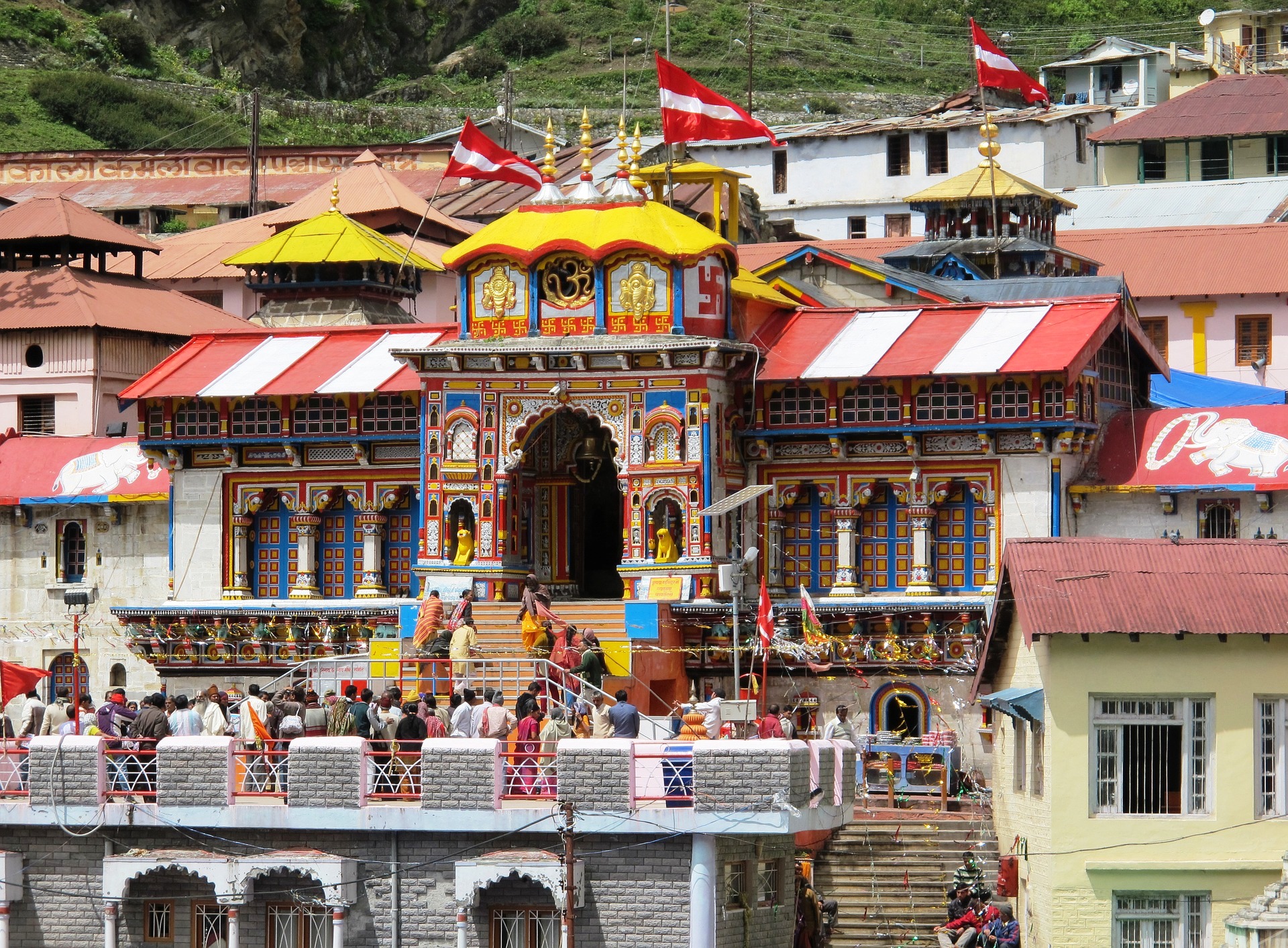
Pilgrims and tourists while speaking of the ‘Char Dham Yatra’ are often misled about the places that complete the Char Dham circuit. To be precise there are two Char Dham Yatras. One is Chhota Char Dham or Uttarakhand Ke Char Dham and the circuit consist of Kedarnath, Badrinath, Yamunotri and Gangotri. The other one is the bigger circuit of Char Dham and covers Puri, Rameswaram, Dwarka and Badrinath. The Char Dhams are the four abodes of Hindu pilgrimage sites which are considered to be utmost pious and sacred. They also believe that one must complete the Char Dham circuit once in their lifetime to attain salvation or Moksha.
Adi Shankaracharya with an aim to enrich and unite the Hindus established four monasteries or Peethas at four corners of the country. Puri in the East (Govardhan Peeth), Rameswaram in the South (Sringeri Peeth), Dwarka in the West (Sharda Peeth) and Badrinath in the North (Jyotirmath Peeth) are home to the four monasteries and have their own school of Hindu philosophy. Consequently, these places came to be summoned as Char Dham.
This article is dedicated to the larger circuit of Char Dham along with a few titbits of history and mythology.
Puri, Odisha

Jagannath Temple is the prime attraction of Puri town that resides at the coast of Bay of Bengal. Lord Jagannath is believed to be the incarnation of Lord Vishnu and is worshipped here along with his brother Baladeva and sister Subhadra.
Legends say that Lord Jagannath was worshipped earlier as Neel Madhava. Soon, he appeared in the dreams of the King and ordered him to make the sculptures from Neem wood that afloat on the seashore.
Every year, Puri hosts the famous Rath Yatra or the Chariot Festival. This is the time when thousands of tourists and pilgrims from all across the globe flock here to take part in the grandeur. During the fiesta, the three deities are seated in their respective chariots and pulled by the devotees to their aunty’s place, a nearby temple named Gundicha temple. Few other temple attractions in and around Puri include Gundicha Temple, Alarnath Temple, and Sakshi Gopal Temple.
Rameswaram, Tamilnadu

The Pamban island (also called the Rameswaram island) of Tamilnadu amidst the Arabian Sea hosts the temple town of Rameswaram. According to the Hindu mythology, Lord Rama built a bridge from Rameswaram to Sri Lanka (which was known as Lanka in those days) in order to rescue his wife Sita who was abducted by Ravana. Both geological and historical evidence upholds that the Ram Setu or the bridge was the only connection between India and Lanka in that era.
Dedicated to Lord Shiva, the main attraction of the town is the silvery Ramnathswamy Temple. It is also one of the 12 Jyotirlingas in India and is believed that a pilgrimage to Varanasi is incomplete without paying homage to Lord Ramnathswamy. It is said that Lord Rama while leaving for the battlefield prayed to Lord Shiva for his victory after which the temple derived its name as the same.
This shrine in the circuit of Char Dham is the main pilgrimage place for both the Vaishnavas and the Shaivas. Apart from Lord Ramnathswamy other places of importance include Agniteertham, and five faced Hanuman Temple.
Dwarka, Gujarat

The gray ceilings and facades of the historic Dwarkadheesh Temple are dedicated to the black altar of Lord Krishna. Located on the banks of Gomti River in Gujarat, Dwarka is believed to be the ancient kingdom of Lord Krishna. The term ‘Dwar’ refers to door and hence the peninsular Okhamandal of Dwarka is believed to be the gateway to heaven or ‘moksha’.
The holy place is yet another ‘Char Dham’ allure for the Vaishnavas. The lord here is worshipped as a king along with his other consorts viz. Rukmini and Satyabhama.
According to Hindu mythology, after defeating Kansa, Lord Krishna with the help of Lord Viswakarma built his golden kingdom of Dwarka near the Arabian Sea. Vet Dwarka, Rukmini Mandir, Gopi Talk and Nageswar Mahadev are some other pilgrimage sites in and around Dwarka.
Badrinath, Uttarakhand

The ice-capped peaks of the Himalayas with the gushing Alaknanda shelter the yellow and indigo-colored temple of Badrinath or Badrivishal. Lord Vishnu being the main alters here, this is another major pilgrimage site of the Vaishnavas. Pilgrims and tourists on the way to Kedarnath tend to visit Badrivishal as well. The hilly landscape along with the rippling Alaknanda offers the travelers an altogether divine cosmos.
Many say that Lord Vishnu went in meditation at this place for years for the welfare of mankind. While the Lord was in deep meditation, his consort Devi Lakshmi stood beside him while sheltering him from heat and sun. In course of sheltering her beloved, she herself turned into berry bush (‘Badri’ means berry and ‘Nath’ refers to the lord; it is said that once this place was full of berry bushes which derived its name as Badrinath)
Pilgrims heading for the Chota Char Dham also pay homage at this shrine apart from Kedarnath, Yamunotri and Gangotri. The Chota Char Dham Yatra remains closed for the winter days due to heavy cold and snowfall. For the bigger circuit, though Badrinath operates in the months of May to October only, other temples and sites can be visited all-round the year.







